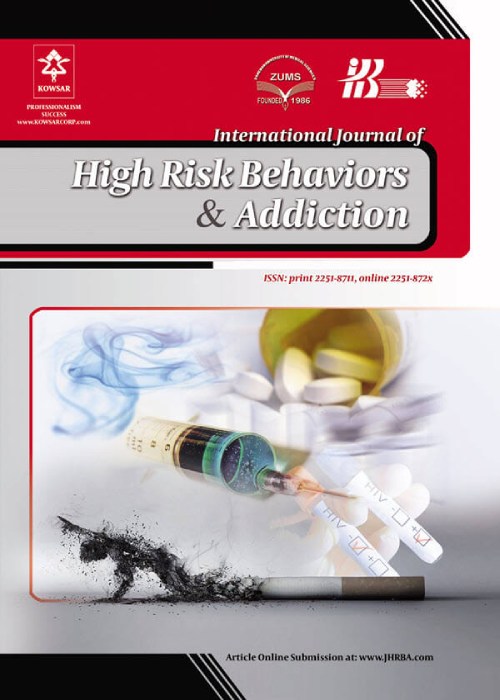Methamphetamine Dependency
Author(s):
Abstract:
Methamphetamine use and dependency is a serious public health problem with implications across multiple areas from societal impact to burden on psychiatric and medical resources (1). Different areas such as East and Southeast Asia, Australia, Middle West and Western areas of United States and some regions of Great Britain are suffering from Methamphetamine use and related problems (2). An estimated 8% of admissions to substance abuse treatment programs are associated to stimulants with Methamphetamine misuse (1). The comparison of demographic characteristics and variety of substances in Methadone maintenance clinic of Baharan Psychiatry Hospital in Zahrdan, Iran in 2009-2011, has reported an increasing proceeding of methamphetamine use from 6% to about 20% (3). The Administrator of Health and Social anti-drug campaign declared that the substance related psychotic symptoms are noticeable among Methamphetamine users, it has also been reported that 50% of patients of psychiatric wards consist of Methamphetamine users psychosis patients, which would bring a number of harmful demerits to this the wards (4). Methamphetamine is a potent form of amphetamine, administrated through different routes such as: inhalation, smoking, intravenous injection and orally (2, 5). The primary effect of Methamphetamines is at the point of the catecholamine release (specially Dopamine), from the presynaptic cells, these effects are stronger among ventral tegmental Dopaminergic neurons connected to the cerebral cortex and limbic system, the activation of this reward pathway may probably lead to amphetamine dependency (5). Craving is the principal cause of drug abuse; Ekhtiari et al. reported that Methamphetamine is a common stimulant substance in Iran, which produce high level of cravings (6). Short term effects of methamphetamine such as initial rush, increased level of energy, appetite and general sense of well-being, would last 6-8 hours. Methamphetamine increases the sex desires and enhances the sexual experience, which is directly related to high risk behaviors including multiple sexual partnership, pregnancy, infectious diseases such as hepatitis and syphilis (7). Restlessness, insomnia, hyperthermia and probably seizures are the side effects of Methamphetamine (2). Addiction, mood disturbance, paranoia, agitation, psychosis, cognitive impairments, poisoning and death are the long-term effects of Methamphetamine (2, 8, 9). In the past few years, the rate of drug poisoning has been increased among the youngsters (10). Methamphetamine abstinence after a long term consumption leads to withdrawal syndrome such as; dysphoric mood, weakness and lethargy, anxiety, nightmare, insomnia, sweating, tension headache and abdominal cramps (6, 11). The withdrawal syndrome will be peaked within 2-4 days and will eliminate after a week and depression associated with suicidal ideation and attempts are the most important symptoms of abstinence (5). The efficiency of pharmacological intervention for treatment of Methamphetamine related disorders is not clear yet (2, 12). Different drugs such as sertraline, bupropion, mirtazapine, Modafinil, Dextroamphetamine, Ondansetron, Risperidone, Aripiprazole, Baclofen, Gabapentin and Nalterxon as a treatment of methamphetamine-related disorders were examined, it has been reported that Aripiperazol is the most common drug used (1, 12).Maintenance therapy for Methamphetamine dependency has been suggested, due to increased rate of methamphetamine dependency, low effectiveness of methamphetamine related drug therapy and the good effects of methadone and buprenorphine maintenance therapy in treatment of opioid dependency. Preliminary studies have shown that Dexamphetamine maintenance therapy increases patients’ retention in treatment program and decrease methamphetamine consumption (2).Consistent with low effectiveness of pharmacological interventions and risky behaviors which increase the risk of Human immunodeficiency virus (HIV) and hepatitis transmission among Methamphetamine abusers, it is expected that further investigations related to Methamphetamine dependency and appropriate treatment approaches for more effective treatment would increase the retention of patients by providing therapeutic protocols, however we should consider that Psychotherapy despite the high relapse rate, is still the main treatment. Further surveys with the use of combination models, will provide beneficial and useful treatments to patients with methamphetamine addiction.
Language:
English
Published:
International Journal of High Risk Behaviors and Addiction, Volume:1 Issue: 1, Mar 2012
Page:
7
magiran.com/p998519
دانلود و مطالعه متن این مقاله با یکی از روشهای زیر امکان پذیر است:
اشتراک شخصی
با عضویت و پرداخت آنلاین حق اشتراک یکساله به مبلغ 1,390,000ريال میتوانید 70 عنوان مطلب دانلود کنید!
اشتراک سازمانی
به کتابخانه دانشگاه یا محل کار خود پیشنهاد کنید تا اشتراک سازمانی این پایگاه را برای دسترسی نامحدود همه کاربران به متن مطالب تهیه نمایند!
توجه!
- حق عضویت دریافتی صرف حمایت از نشریات عضو و نگهداری، تکمیل و توسعه مگیران میشود.
- پرداخت حق اشتراک و دانلود مقالات اجازه بازنشر آن در سایر رسانههای چاپی و دیجیتال را به کاربر نمیدهد.
In order to view content subscription is required
Personal subscription
Subscribe magiran.com for 70 € euros via PayPal and download 70 articles during a year.
Organization subscription
Please contact us to subscribe your university or library for unlimited access!


